|
Size: 4032
Comment:
|
Size: 7177
Comment:
|
| Deletions are marked like this. | Additions are marked like this. |
| Line 27: | Line 27: |
| * The ARFs are evaluated for 1024 unevenly spaced energy bins | |
| Line 31: | Line 32: |
| * The ARFs are evaluated for 1024 unevenly spaced energy bins | |
| Line 38: | Line 40: |
| * TBD | '''Comparison between [[http://www.sternwarte.uni-erlangen.de/research/sixte/downloads/sixte/instruments/instruments_srg-1.4.0.tar.gz|SIXTE instrument description v1.4.0]] vs eSASS CALDB as at 15/02/2018''' * SIXTE uses a "small maps" representation of the eROSITA PSF -> erosita_psf_v3.1.fits * The PSF maps are evaluated at 7 energies (0.3, 1.5, 3.0, 4.5, 5.4, 6.4, 8.0 keV) and 7 off-axis angles (0, 5, 10, 5, 20, 25, 30 arcmin) * Each PSF map has 256x256 pixels, with pixel scale 75um pix^-1^ (=9.669 arcsec pix^-1^ for focal length=1.6m) * The PSF maps are either based on PANTER measurements or on a ray tracing model - '''TODO: confirm this''' * The CALDB contains two types of "instantaneous" PSF model (i.e. not survey-averaged) * A "small-maps" PSF representation -> e.g. fm1_2dpsf_100215v02.fits * The PSF maps are evaluated at 3 nominal energies (1.0, 4.0, 7.0 keV) and 7 off-axis angles (0, 5, 10, 5, 20, 25, 30 arcmin) * Note that for the purposes of CALDB interpretation the energies and off-axis angles are actually expressed as ranges * Energy ranges: 100.-2499.999, 2500.-5499.999, 5500.-12000. eV * Off-axis angle ranges: 0.0-2.499, 2.5-7.499, 7.5-12.499, 12.5-17.499, 17.5-22.499, 22.5-27.499, 27.5-35. arcmin * Each PSF map has 601x601 pixels, with pixel scale 3.867 arcsec pix^-1^ * The PSF maps are based on a ray tracing model * The PSF maps model is used by eSASS tools: SRCTOOL, ?? * A shapelet PSF model representation -> e.g. fm1_slet_psf_181217v02.fits * The shapelet PSF maps are evaluated at 6 energies (0.3, 1.5, 3.0, 4.5, 5.4, 6.4 keV) and at a regular grid of 169 positions ([-30:+30,5]x[-30:+30,5] arcmin) within the focal plane * The shapelet PSF model is computed from fits to PANTER PSF measurements, evaluated separately for each FM1-7 * The shapelet PSF model is used by eSASS tools: ERMLDET, APETOOL, ?? |
| Line 41: | Line 60: |
| * TBD * |
'''Comparison between [[http://www.sternwarte.uni-erlangen.de/research/sixte/downloads/sixte/instruments/instruments_srg-1.4.0.tar.gz|SIXTE instrument description v1.4.0]] vs eSASS CALDB as at 15/02/2018''' * SIXTE uses a single RMF model for all patterns -> sixte_erormf_normalized_singles_20170725.rmf * Splitting of photons into detected patterns (singles, doubles, triples, quads, invalid patterns) is modelled internally within SIXTE * The CALDB RMF contains redistribution matrices for each pattern separately -> e.g. fm1_rmf_141103v01.fits * differences between the RMFs are illustrated in the figures below (x-axis = PI channel, y-axis ENERGY bin) : {{attachment:fm1_rmf_141103v01_singles_image.png|CALDB RMF FM* singles) |width=400}} {{attachment:fm1_rmf_141103v01_doubles_image.png|CALDB RMF FM* doubles) |width=400}} {{attachment:fm1_rmf_141103v01_triples_image.png|CALDB RMF FM* triples) |width=400}} {{attachment:fm1_rmf_141103v01_quads_image.png|CALDB RMF FM1 quads) |width=400}} {{attachment:sixte_erormf_normalized_singles_20170725_image.png|SIXTE RMF FM* all-patterns)|width=600}} |
Description of known differences between SIXTE and eSASS
This page is intended as a place to document the known differences between how the SIXTE simulation code models the response of eROSITA versus the assumptions in the eSASS code, particularly within SRCTOOL.
Code changes with time, so please include both the SIXTE and the eSASS version numbers to any comments, and please add your initials.
Differences in calibration files
Vignetting model (SIXTE: erosita_vignetting_v2.1.fits, eSASS: fm1_tvignet_100302v01.fits)
Comparison between SIXTE instrument description v1.4.0 vs eSASS CALDB as at 15/02/2018
- SIXTE model is tabulated at 31 offaxis angles, eSASS version at only 7
- SIXTE model is tabulated over 3 energy ranges: 0.0-2.5, 2.5-5.5 and 5.5-20 keV, eSASS uses energy ranges: 0.0-2.5, 2.5-5.5 and 5.5-10 keV
- SIXTE and CALDB both use identical vignetting functions for all FMs
- differences in the values of the vignetting function are illustrated in the figures below:
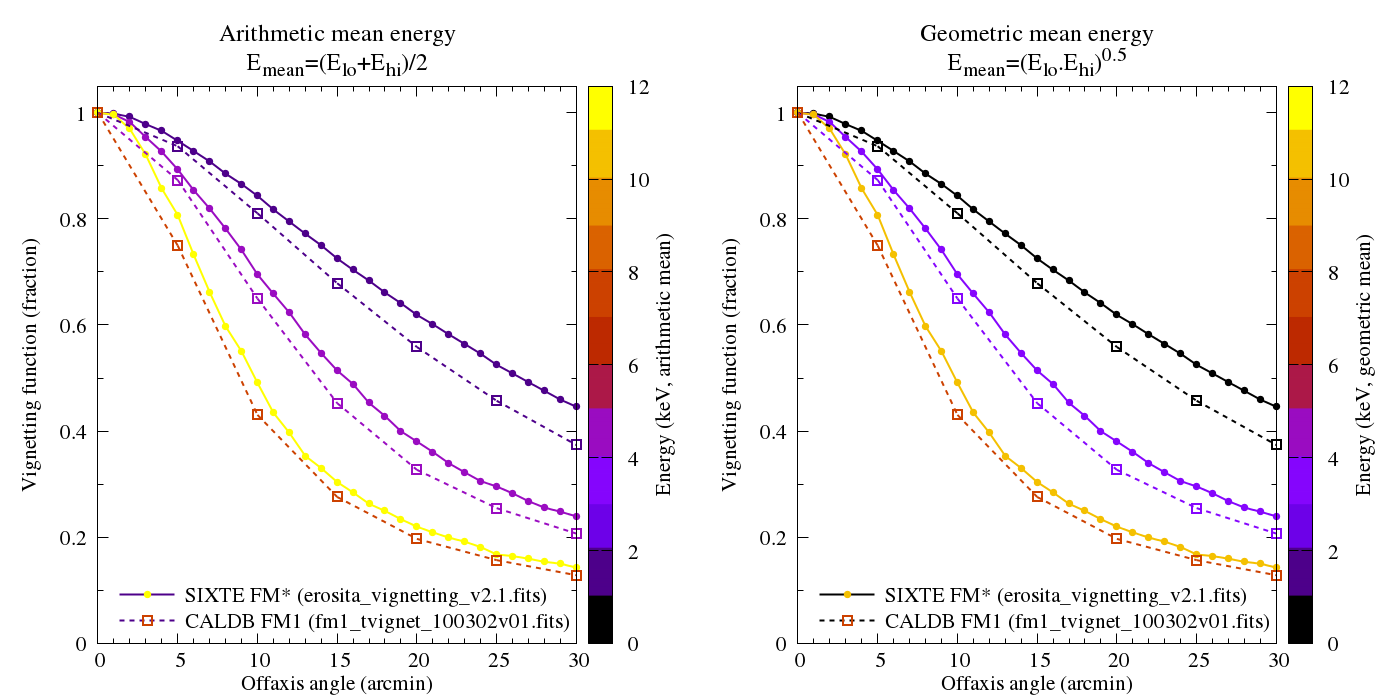
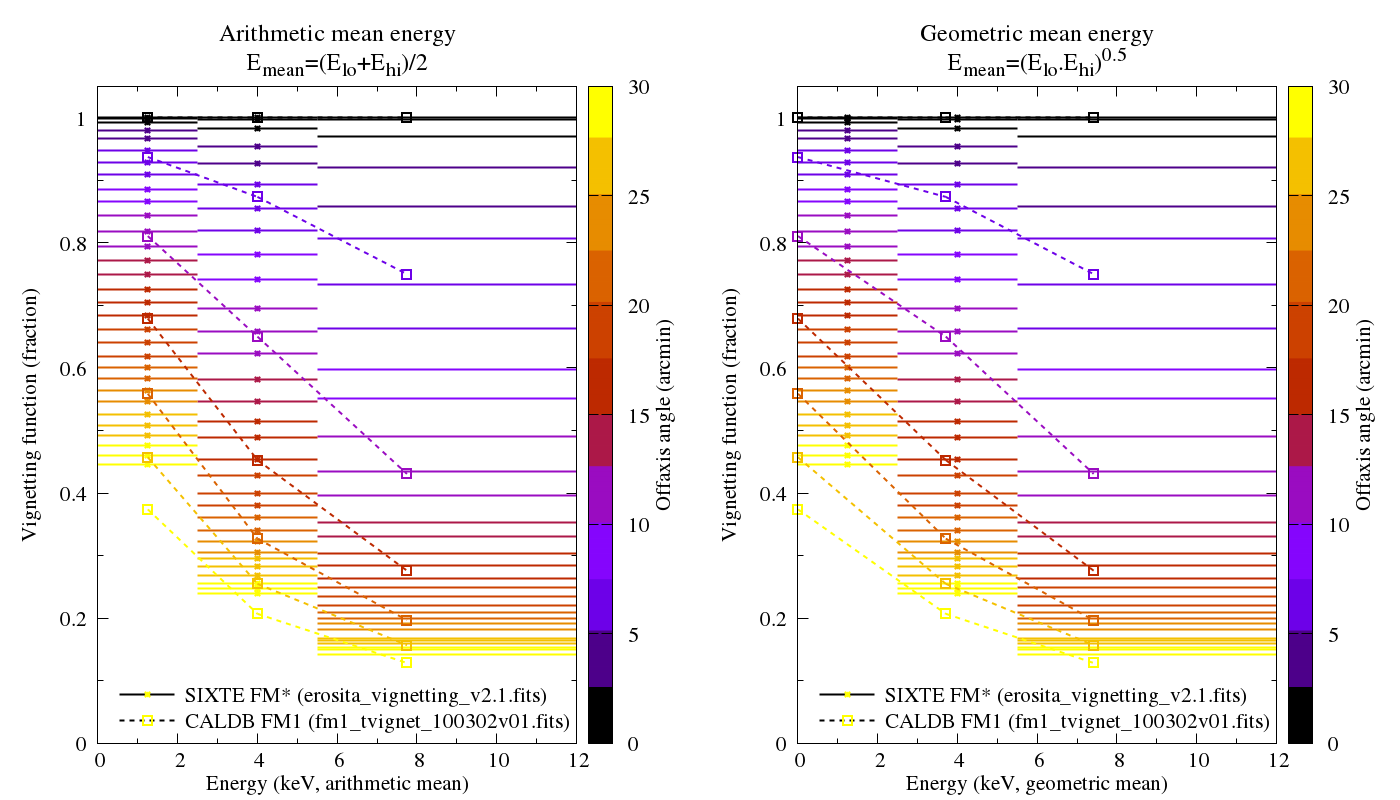
Effective area curves (ARF)
Comparison between SIXTE instrument description v1.4.0 vs eSASS CALDB as at 15/02/2018
- Default SIXTE setup has two types of ARF:
On-chip 200nm Al filter layer and open external filter -> FM1, FM3, FM4, FM6, FM7 -> arf01_200nmAl_sdtq_onaxis.fits
No On-chip filter plus 100nm Al + 200nm PI external filter (on filter wheel) -> FM2, FM5 -> arf01_100nmAl_200nmPI_sdtq_onaxis.fits
- The ARFs are evaluated for 1024 unevenly spaced energy bins
- CALDB contains three types of ARF:
On-chip filter + open external filter -> FM1, FM3, FM4, FM6, FM7 -> e.g. fm1_arf_open_000101v02.fits
On-chip filter + external filter (on filter wheel) -> FM1, FM3, FM4, FM6, FM7 -> e.g. fm1_arf_filter_000101v02.fits
No on-chip filter + external filter (on filter wheel) -> Fm2, FM5 -> e.g. fm2_arf_filter_000101v02.fits
- The ARFs are evaluated for 1024 unevenly spaced energy bins
- SIXTE and CALDB both use identical vignetting functions for groups of FMs (On-chip group: FM1, FM3, FM4, FM6, FM7; No on-chip group: FM2, FM5)
- differences in the values of the ARF curves are illustrated in the figures below:
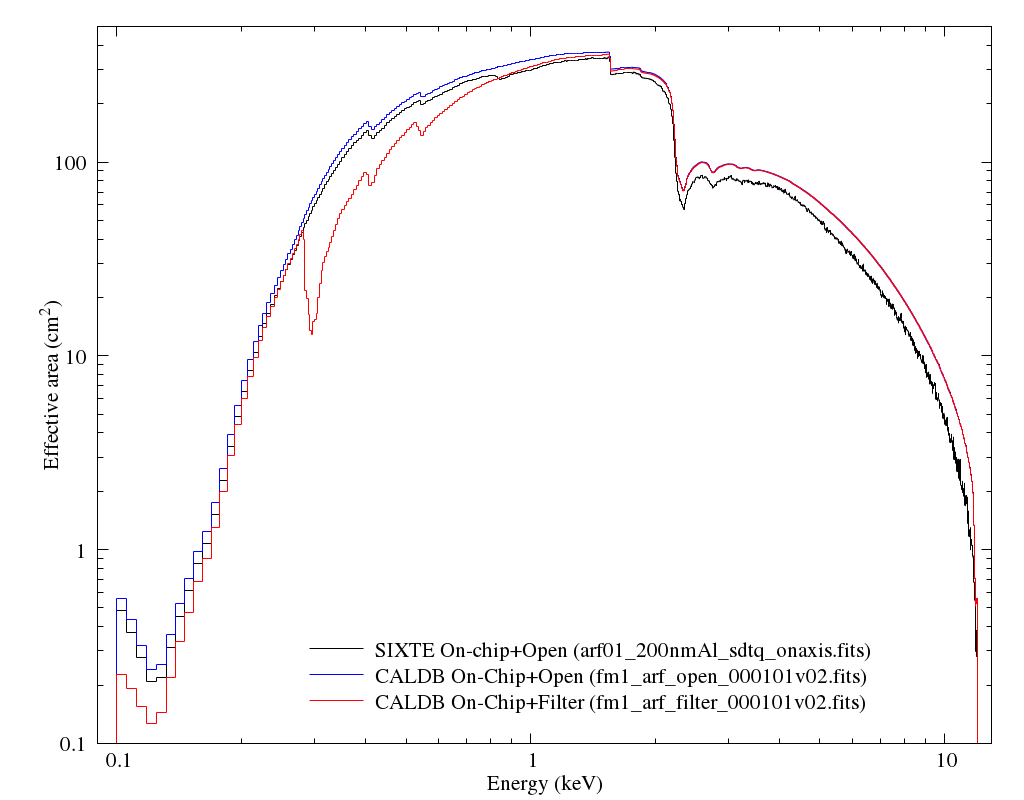
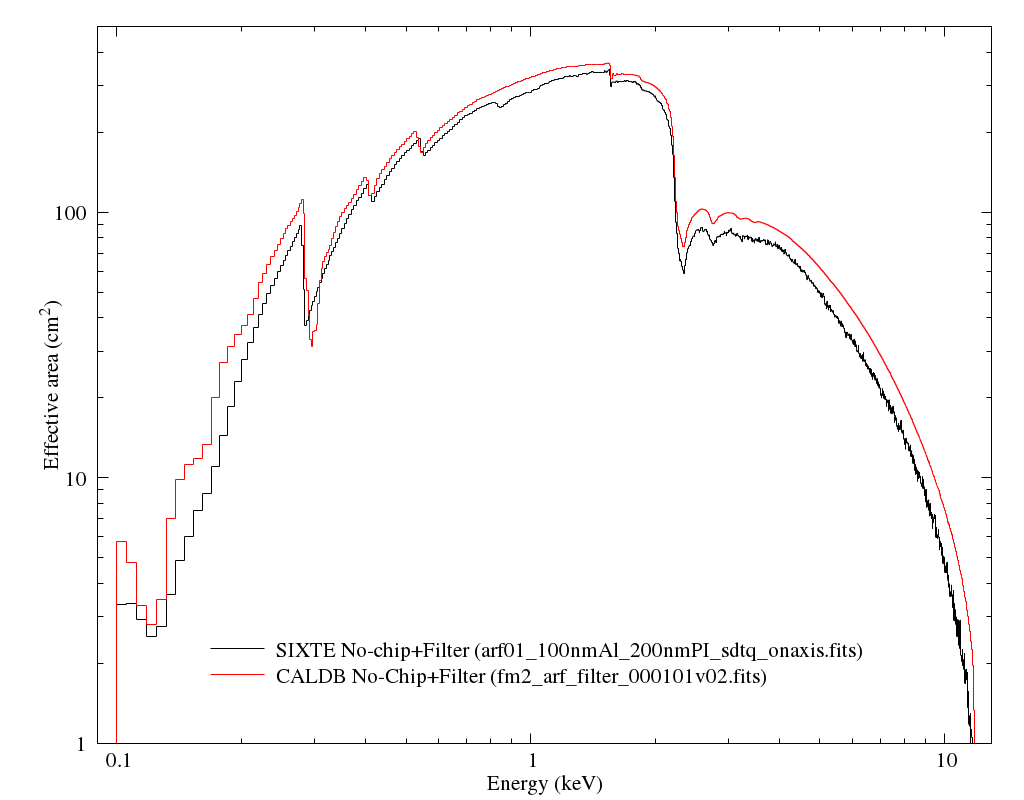
PSF model(s)
Comparison between SIXTE instrument description v1.4.0 vs eSASS CALDB as at 15/02/2018
SIXTE uses a "small maps" representation of the eROSITA PSF -> erosita_psf_v3.1.fits
- The PSF maps are evaluated at 7 energies (0.3, 1.5, 3.0, 4.5, 5.4, 6.4, 8.0 keV) and 7 off-axis angles (0, 5, 10, 5, 20, 25, 30 arcmin)
Each PSF map has 256x256 pixels, with pixel scale 75um pix-1 (=9.669 arcsec pix-1 for focal length=1.6m)
The PSF maps are either based on PANTER measurements or on a ray tracing model - TODO: confirm this
- The CALDB contains two types of "instantaneous" PSF model (i.e. not survey-averaged)
A "small-maps" PSF representation -> e.g. fm1_2dpsf_100215v02.fits
- The PSF maps are evaluated at 3 nominal energies (1.0, 4.0, 7.0 keV) and 7 off-axis angles (0, 5, 10, 5, 20, 25, 30 arcmin)
- Note that for the purposes of CALDB interpretation the energies and off-axis angles are actually expressed as ranges
- Energy ranges: 100.-2499.999, 2500.-5499.999, 5500.-12000. eV
- Off-axis angle ranges: 0.0-2.499, 2.5-7.499, 7.5-12.499, 12.5-17.499, 17.5-22.499, 22.5-27.499, 27.5-35. arcmin
- Note that for the purposes of CALDB interpretation the energies and off-axis angles are actually expressed as ranges
Each PSF map has 601x601 pixels, with pixel scale 3.867 arcsec pix-1
- The PSF maps are based on a ray tracing model
- The PSF maps model is used by eSASS tools: SRCTOOL, ??
- The PSF maps are evaluated at 3 nominal energies (1.0, 4.0, 7.0 keV) and 7 off-axis angles (0, 5, 10, 5, 20, 25, 30 arcmin)
A shapelet PSF model representation -> e.g. fm1_slet_psf_181217v02.fits
- The shapelet PSF maps are evaluated at 6 energies (0.3, 1.5, 3.0, 4.5, 5.4, 6.4 keV) and at a regular grid of 169 positions ([-30:+30,5]x[-30:+30,5] arcmin) within the focal plane
- The shapelet PSF model is computed from fits to PANTER PSF measurements, evaluated separately for each FM1-7
- The shapelet PSF model is used by eSASS tools: ERMLDET, APETOOL, ??
Redistribution functions (RMF)
Comparison between SIXTE instrument description v1.4.0 vs eSASS CALDB as at 15/02/2018
SIXTE uses a single RMF model for all patterns -> sixte_erormf_normalized_singles_20170725.rmf
- Splitting of photons into detected patterns (singles, doubles, triples, quads, invalid patterns) is modelled internally within SIXTE
The CALDB RMF contains redistribution matrices for each pattern separately -> e.g. fm1_rmf_141103v01.fits
- differences between the RMFs are illustrated in the figures below (x-axis = PI channel, y-axis ENERGY bin) :




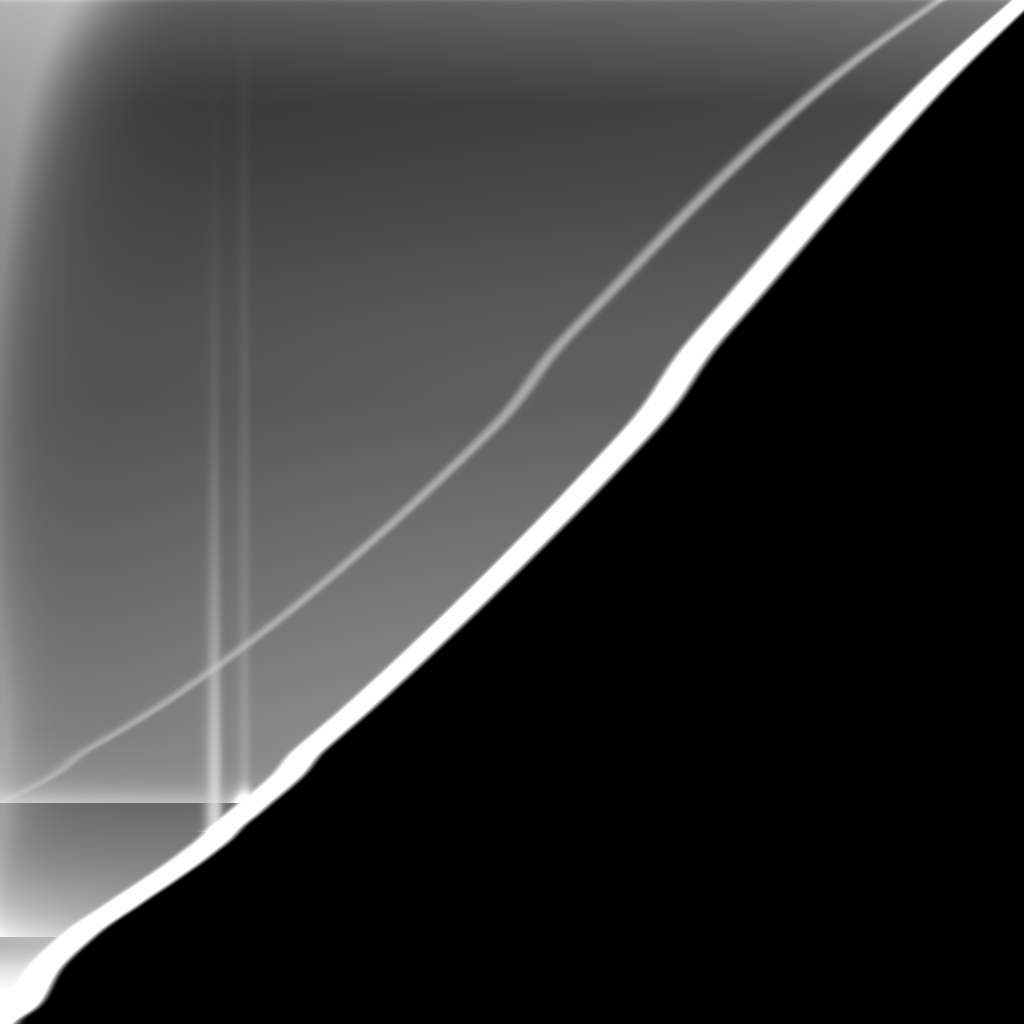
Differences in modelling the instrument
- (TD) Just out of field sources (SIXTE v2.1.1 - SRCTOOL v*)
Difference: SIXTE generates counts for a point source only if its sky coordinates fall inside the detector footprint, however SRCTOOL assumes that sources just outside the detector footprint will create detectable counts due to the finite PSF.
Consequence: If one uses SIXTE to simulate a source observed in an eROSITA scan, and examines the lightcurve produced by SRCTOOL, the source will appear to be too faint as it crosses into and out of the detector FoV.
Notes: The behaviour of SIXTE for extended sources near the edge of the FoV has not been checked by me (TD).
- (TD) Pileup (SIXTE v* - SRCTOOL v*)
Difference: SIXTE has a detailed model of pileup, SRCTOOL makes no attempt to correct for pileup (by design)
Consequence: When using SRCTOOL to analyse simulated eROSITA observations of very bright sources (made via SIXTE) will give misleading results (sources will appear to be too faint, too hard, and will have spurious variability)